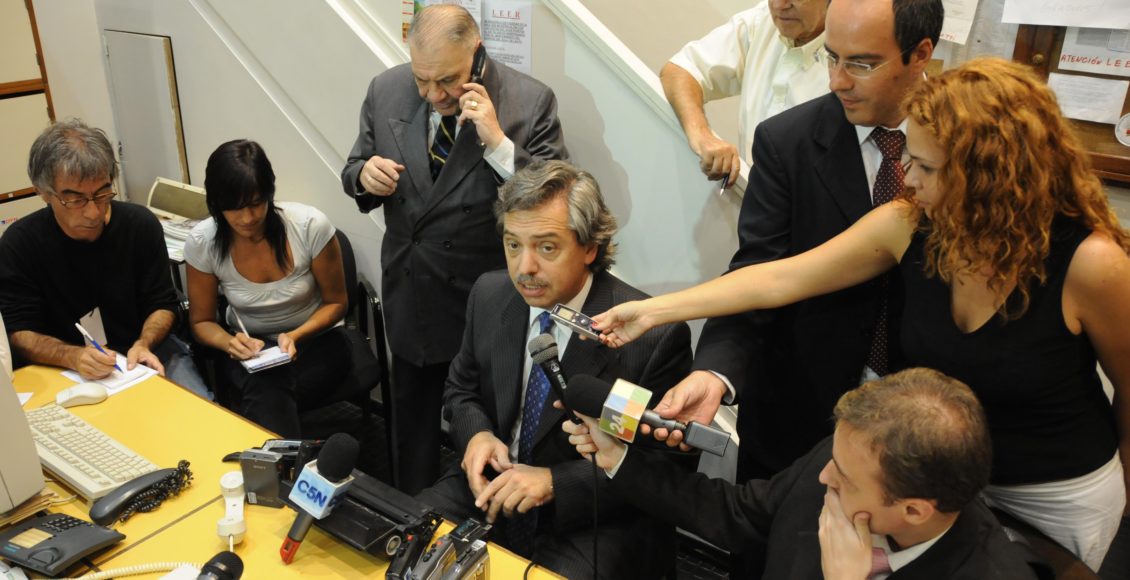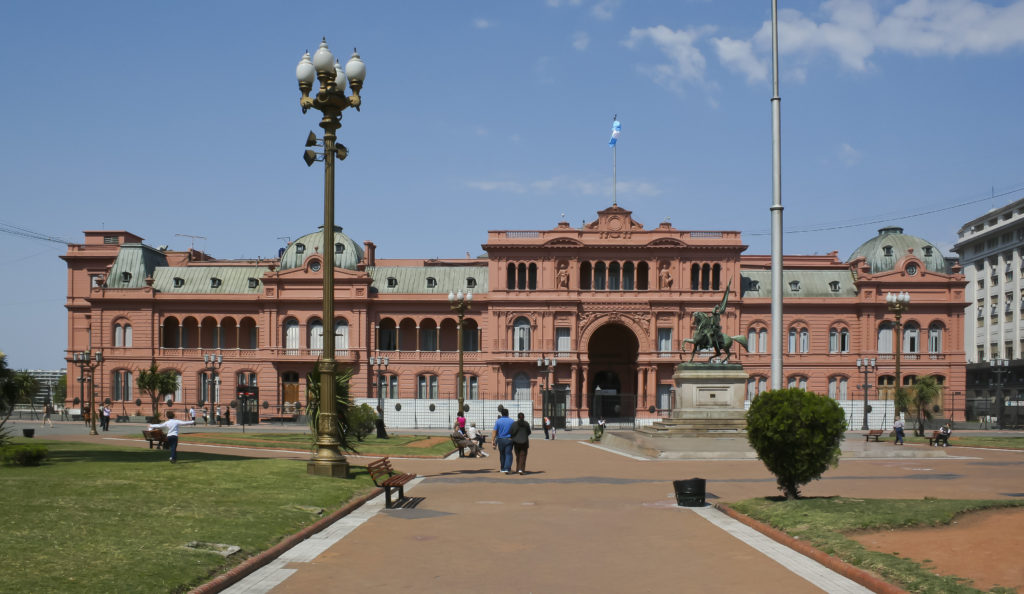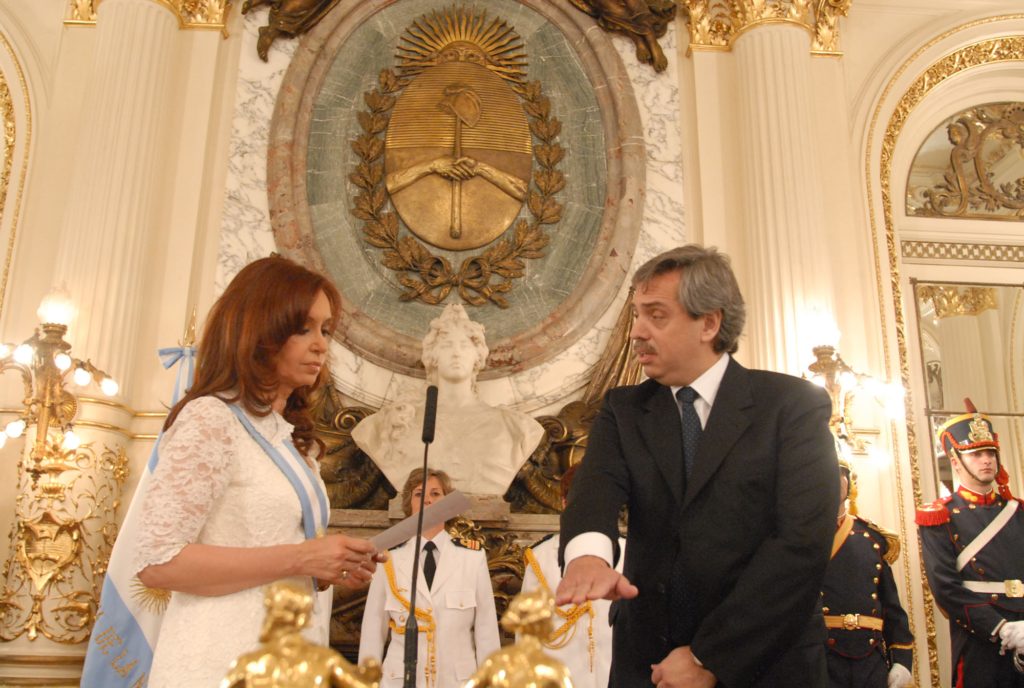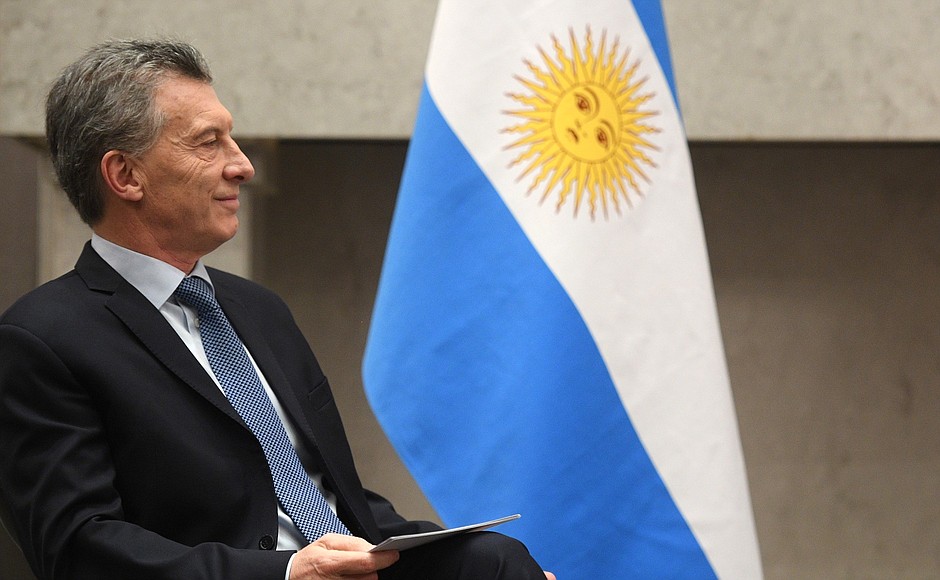The Economic Effects of a New President in Argentina
 Alberto Fernández with reporters in the Casa Rosada. https://images.app.goo.gl/UF5qxSjBPvsLkeFeA
Alberto Fernández with reporters in the Casa Rosada. https://images.app.goo.gl/UF5qxSjBPvsLkeFeA
The Argentine peso fell 35 per cent in August of this year. Ever since it was predicted that the incumbent president, Mauricio Macri, would likely be usurped during the presidential election, the value of the peso has fallen faster than it had in the prior six months. The unexpected nature of the elections has caused upsets in Argentina’s currency and debt markets, as investors and stakeholders worry about a return to populism and what that would mean for the country.

In Argentina, the primary elections are often used as an informal poll and usually predict who will win the electoral campaign. Officially, the primaries are used to determine whether all candidates can achieve at least 1.5 per cent of the vote in their district before they can run in the election. Leader of Frente para Todos, the Péronist opposition party, Alberto Fernández won 47.65 per cent of the popular vote while the incumbent Mauricio Macri won 32.08 per cent.
Macri, leader of moderate coalition Juntos por el Cambio and Argentina’s current president, swept into power in 2015 alongside charges of corruption against the previous president, Cristina Fernández de Kirchner and her Peronist (or Kirchernist) coalition, Frente para la Victoria.
Since re-democratization with the liberation from a military regime in the early 1980s, Argentinian politics have been very polarized. A legacy of specifically Argentinian populism (known as Péronism) continued through the 2000s and early 2010s, and is threatening a comeback.

Péronsim is characterized by working class incorporation, national industry expansion, and international uninvolvement. However, since the early 2000s, there has been a deviation in political style from Péronism to what is considered ‘Kirchnerism’, based on former back to back Peronist presidents Néstor (2003-2007) and Cristina Fernández de Kirchner (2007-2015). ‘Kirchnerism’ invokes the political style and mass appeal of traditional populist Péronism, but with a more conservative economic policy.
In fact, after her resounding defeat in 2015, Cristina Fernández de Kirchner is making her return to the ballot as the vice-presidential candidate to Alberto Fernández with a reorganized Péronist coalition called Frente para Todos. Fernández was Chief of Cabinet during the Néstor Kirchner years and defined the fiscally conservative, hard-line deficit-reducing economic policy.
Argentina uses a “ballotage” electoral system wherein there are two rounds of voting. During the first round of voting a candidate wins outright if she wins 45 per cent of the vote (or is at least 10 percent ahead of the runner-up with 40-44 per cent of the vote). If no candidate wins 45 percent in the first round, then a runoff election takes place. Since 1994, there have only been two runoff elections, in 2003 and 2015.
It seems that a Fernández government will look a lot like the early days of Nestor Ferdánez de Kirchner’s government, with Fernández facing a similar economic crisis to the one Kirchner faced in 2001. The first Kirchnerist government’s economic policy included lower levels of inflation, reduced interest rates and more restrictions on public spending.
Fernández’s campaign, like the election in general in Argentina, has been mainly focused on economic policy and poverty alleviation. He prides himself on a specific, responsible, and fiscally sustainable plan to pull Argentina out of its economic downturn. However, when analyzed, the key points of his plan are unspecified and not clearly operational.
Fernández’s most specific and frequently mentioned solution to the economic crisis is an agreement of prices and salaries between the government, workers’ unions, and businesses. The agreement would be similar to the Moncloa Pacts used to correct the inflation and unemployment Spain faced during their transition to democracy in the 1970s. However, this type of policy come poses certain implementation problems.
Fernández has said that he would negotiate the deal between the workers’ unions and business associations prior to taking office in December. However, this would involve a temporary freeze of prices and salaries (to ensure workers can pay for essential needs) and act only as a preventative or mitigative policy to prevent future inflation. In other words, this agreement would only be a supplementary measure to buy Fernández time while he implements other policies to strengthen Argentina’s economic situation.
Additionally, negotiating the agreement would require labour unions and businesses, who have been stung by price-salary freezing measures in the past, to buy into the deal.

Fernández’s other economic plans include commitments to reducing public debt by cutting spending and lowering interest rates — a part of a “kind of fluid change”, as a representative describes, that ebbs and flows with time.
Fernández uses a very particular style of politics, specifically regarding the economy, that carries the legacy of Péronism but with a strong Kirchnerist influence. He advocates for widespread change, without presenting hard plans for a solution, and is rallying Argentinians around the idea that he, personally, is the one to be trusted to carry the country out of the crisis.
Whenever possible, Fernández brings the conversation back to the struggles people are facing, without speaking clearly about labour reform, labour agreements, or an integrated economic plan, touching instead, as mentioned above, on fiscal prudence and public spending cuts.
The economic crisis Fernández faces is still far from that which Néstor Kirchner faced in 2001, and as much as Fernández is resorting to former Kirchnerist glory, the severity of the economic crisis in 2019 may require a new way of thinking.
The feature image, “Alberto Fernández con periodistas en Casa Rosada” from the Presidencia de la Nación de Argentina, is licensed under the Creative Commons Attribution 2.0 Generic.
Edited by Valeria Lau.
